The Hairdresser and Barbershop Signs of Africa are original boards from barbershops and hair-salons in the Ivory Coast, Ghana, Burkina Faso and Tofo dating from the 1970-ies to the present day.
Ivory Coast
Ghana
The advertising signs contain all aspects of a specific popular genre, with similarities and differences mirroring the times of their appearance – the stylistic signature, fashion trends and influences from abroad, at the same time revealing a strong respect for the traditional ways of combing hair – the starting point for almost all modern hairstyles. Inherited ideals that meet and merge with contemporary expressions, in this case, new and authentic stylizations and imported styles, create a harmonious symbiosis evident in varying formal designs in the context of elaborating hairstyles for the purpose of creating a visual embellishment of the head.
Burkina Faso
Advertising boards were made by specialised, self-taught artists, who used colours to paint previously determined motifs on wooden, plywood, or less commonly on metal surfaces, most often with the very expressive use of pure colours. The paintings mostly portrayed figure motifs which symbolised certain respectable professions, or certain products and brand names. Besides the pictorial, the boards also conveyed written messages and signs. This specific combination of symbol and written message which characterises African painted signs have not changed since the emergence of this art, except to the extent of corresponding to the spirit of the times.
Togo
Today there are a number of artists all over Africa who are specialized in the painting of advertising boards. Their work advertises a wide spectrum of products and professions – from movies, restaurants, hotels, discotheques, buses, car mechanics, cobblers, tailor shops, state, health and religious institutions to the new trendy hairstyles.
Contributor: The Museum of African Art; Belgrade, Serbia
African Barber signs courtesy of Indigo Arts Galley.

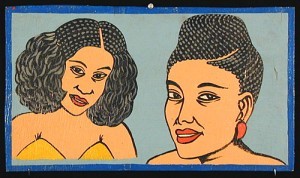
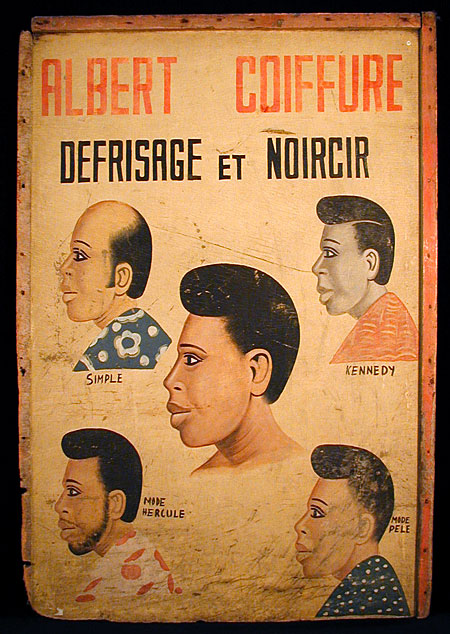
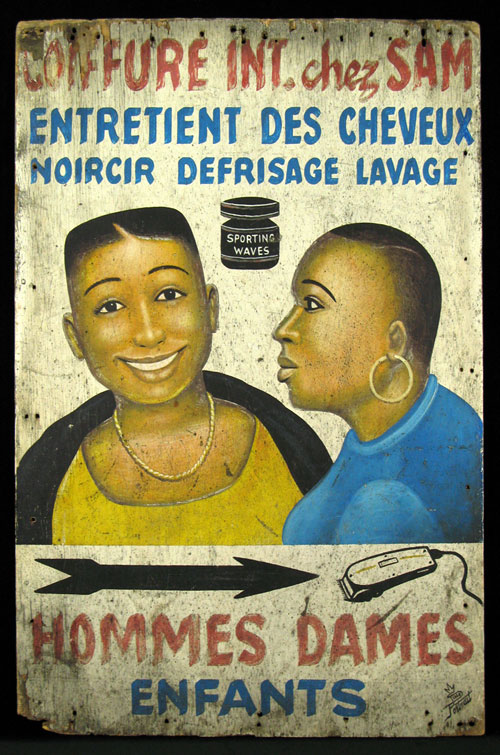
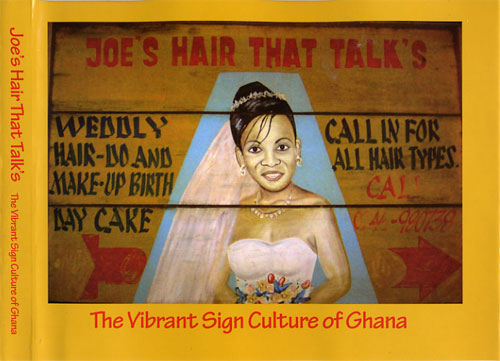
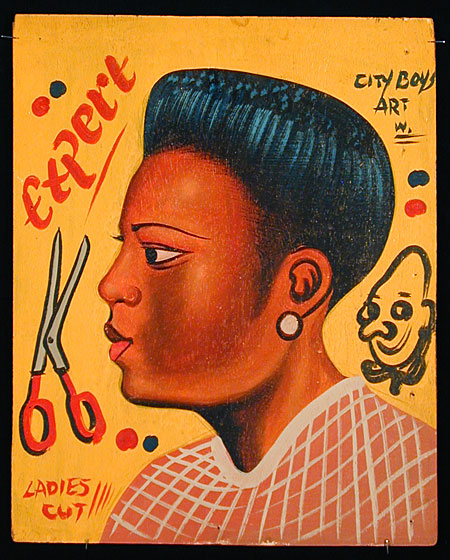
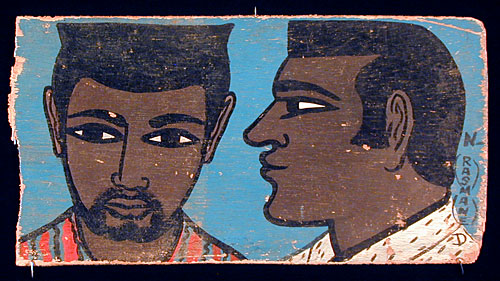
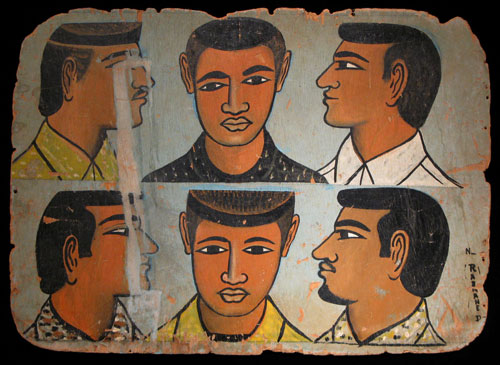
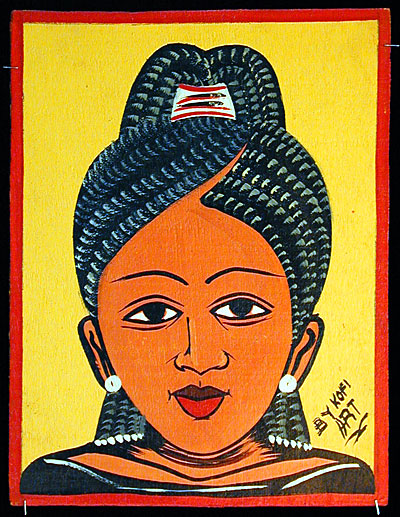
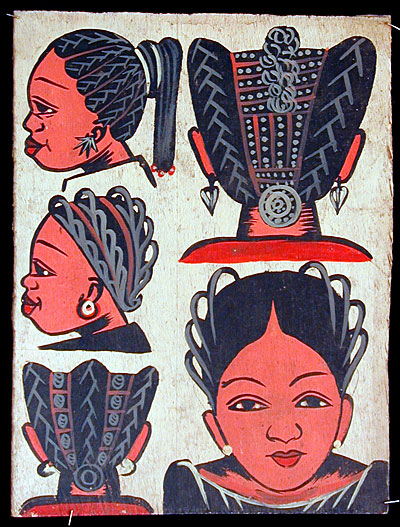


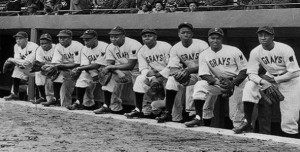

1 Comment
Interesting to know the story behind these. I was intrigued with the sort of primitive look of the paintings. If you want to look at more images or buy some of the old paintings this person (http://www.etsy.com/shop/Secousse) seems to have quite the collection.
Thanks for this article and story!